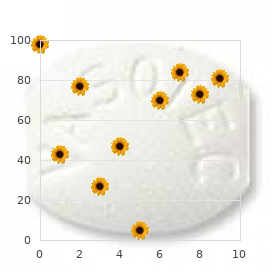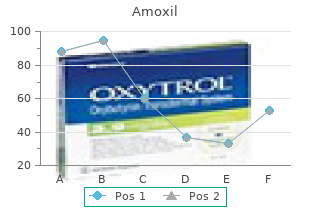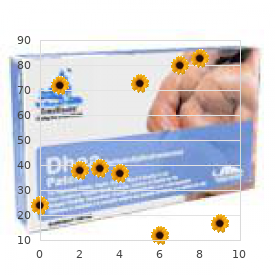Amoxil
"Effective 500mg amoxil, virus usb device not recognized".
By: B. Topork, MD
Medical Instructor, Florida State University College of Medicine
Of concern is the potential for myocardial and cerebral ischemia because hypothermia has not yet been achieved antibiotics low blood pressure buy online amoxil. Until the aortic cross-clamp is applied antibiotic hair loss order amoxil from india, the coronary arteries are perfused with hemodiluted virus 50 order amoxil 500 mg fast delivery, nonpulsatile blood. This arterial pressure is likely adequate to maintain cerebral blood fow until hypothermia is induced. Potential for Patient Awareness It is not uncommon for patients to sweat during rewarming. The brain is a high-fow organ and can be assumed to equilibrate fairly quickly (15 to 20 minutes) with cerebral v perfusate temperature. A less likely but more dis turbing possibility is that restoration of brain normothermia with decreased anesthetic concentration may result in inadequate depth of anesthesia and the potential for aware ness. If awareness is suspected, supplemental amnestics or anesthetics should be administered dur ing rewarming. Excessive perfusate heating is not advis able for at least three key reasons: possible denaturation of plasma proteins, possible 532 cerebral hyperthermia, and the fact that dissolved gas can condense into bubbles if the temperature gradient is too great. Although this will increase the duration of rewarming, the risk of hyperthermic brain injury is greatly increased with hyper thermic blood temperatures. Rewarming may be enhanced by increasing pump fow, which thereby increases heat input. There are two approaches to this problem: wait out the vasoconstriction or pharmacologically induce patient vasodilation. When rectal or bladder temperature approaches 30� to 32�C, patients appear to rapidly vasodilate. This is probably the result of decreasing blood viscos ity or relaxation of cold-induced vasoconstriction with warming. Increasing pump fow at this point serves several purposes: increased heat transfer, support of sys temic arterial pressure, and increased oxygen delivery in the presence of increasing oxygen consumption. Often, waiting for the patient to spontaneously �vasodilate is suffcient; and with subsequent increased pump fows, rewarming will be adequate at separation from bypass support. Circumstances in which more aggressive rewarming may be needed include profound hypothermia with a large hypoperfused �heat sink and late initiation of warming by accident or design. Pharmacologic vasodilation allows an earlier increase in pump fow and deliv ery of warmed arterial blood to low-fow beds, making the rewarming process more uniform. Sterile forced-air rewarming devices and servoregulated systems are also available. Radial arte rial catheters may underestimate central aortic systolic pressures by 10 to 40 mmHg. Mecha nisms are undefned, but evidence supports vasodilatory and arteriovenous shunting phenomena in the forearm and hand. Removal of Intracardiac Air At the end of the procedure, intracardiac air is present in virtually all cases that require opening the heart. In such cases, it is important to remove as much air as possible before resumption of ejection. The left atrium and left ventricle are ballotted to dislodge bubbles, and the cycle is repeated. The operating table can be rotated from side to side and the lungs ventilated to promote clearance of air from the pulmonary veins. Rather than transventricular aspiration, some surgeons vent air through the cardioplegia cannula or a needle vent in the ascending aorta. Before removal of the aortic cross-clamp, the patient is placed head down, so that bubbles will foat away from the dependent carotid arteries. Some surgeons favor temporary manual carotid occlusion before cross-clamp removal, but safety and effcacy of this potentially dangerous maneuver are undocumented. A venting cannula is often left in the aorta at a location that should allow air pickup after resumption of ejection. The aortic cross-clamp can be temporarily reapplied for additional air-clearing maneuvers. Transcranial Doppler studies document a high incidence of intracranial gas emboli on release of the aortic cross-clamp or resumption of ejection.



Endemic rate of fluid contamination and related septicemia in arterial pressure monitoring antimicrobial quality control purchase 500mg amoxil with amex. Epidemic bloodstream infections from hemodynamic pressure monitoring: signs of the times antibiotics via iv amoxil 500 mg on line. Catheter-related sepsis: prospective antibiotic zone reader purchase amoxil 250 mg with visa, randomized study of three methods of long-term catheter maintenance. The duration of placement as a predictor of peripheral and pulmonary arterial catheter infections. The risk of infection related to radial vs femoral sites for arterial catheterization. Nosocomial fungemia in neonates associated with intravascular pressure-monitoring devices. Candida parapsilosis fungemia associated with parenteral nutrition and contaminated blood pressure transducers. Intravenous tubing containing burettes can be safely changed at 72 hour intervals. Prospective study of replacing administration sets for intravenous therapy at 48-vs 72hour intervals. The relationship between intravenous fluid contamination and the frequency of tubing replacement. Microbial growth patterns in a total parenteral nutrition formulation containing lipid emulsion. Postoperative infections traced to contamination of an intravenous anesthetic, propofol. Increased bloodstream infection rates in surgical patients associated with variation from recommended use and care following implementation of a needleless device. A prospective clinical study to investigate the microbial contamination of a needle-less connector. Comparison of the microbial barrier properties of a needleless and a conventional needle-based intravenous access system. Line-associated bloodstream infections in pediatric intensive-care unit patients associated with a needleless device and intermittent intravenous therapy. Study of a needleless intermittent intravenous-access system for peripheral infusions: analysis of staff, patient, and institutional outcomes. Bloodstream infection associated with needleless device use and the importance of infection-control practices in the home health care setting. A fall in bloodstream infections followed a change to 2% chlorhexidine in 70% isopropanol for catheter connection antisepsis: a pediatric single center before/after study on a hemopoietic stem cell transplant ward. A prospective clinical trial to evaluate the microbial barrier of a needleless connector. Outbreak of bloodstream infection temporally associated with the use of an intravascular needleless valve. Increased rate of catheter-related bloodstream infection associated with use of a needleless mechanical valve device at a long-term acute care hospital. Increased catheter-related bloodstream infection rates after the introduction of a new mechanical valve intravenous access port. Incidence of catheter-related bloodstream infection among patients with a needleless, mechanical valve-based intravenous connector in an Australian hematology-oncology unit. Systematic intervention to reduce central line-associated bloodstream infection rates in a pediatric cardiac intensive care unit. Effectiveness of a central line bundle campaign on line associated infections in the intensive care unit. Reduction of catheter-associated bloodstream infections in pediatric patients: experimentation and reality. Improving the quality of measurement and evaluation in quality improvement efforts. The pathogenesis of catheter-related bloodstream infection with noncuffed short term central venous catheters.

Mary Ellen Lyon Clinical bacteria discovery purchase amoxil amex, Instructor of Emergency Medicine antibiotic unasyn cheap amoxil 250 mg with amex, Yale University School of Medicine 771 999 bacteria what is 01 buy genuine amoxil line. Rachael Cohen, Student, Global Health Studies Department at Allegheny College 773. Eleanor A Reid, Assistant Professor, Emergency Medicine, Division of Global Health and International Emergency Medicine, Yale Medical School 775. Bernstein, Professor of Emergency Medicine and Public Health at Yale School of Medicine 782. Donna E Levin, National Director, for the Staff at the Network for Public Health Law 785. Newberry, Clinical Assistant Professor at Stanford University School of Medicine 786. Meng-Huang Wu, Global Faculty in Training, Byers Center for Biodesign, Stanford University 792. Zhe Zheng, PhD student, Department of Epidemiology of Microbial Diseases, Yale School of Public Health 795. Senica Marie Camello, Masters Student, Occupational Therapy, Loma Linda University 796. Dorothy Baker, Senior Research Scientist Yale School of Medicine Organizational Signatures 797. Schultz Autism Evidence-Based Practice Review Group Frank Porter Graham Child Development Institute University of North Carolina at Chapel Hill Evidence-Based Practices for Children, Youth, and Young Adults with Autism Spectrum Disorder � 2014 by Samuel L. Evidence-based practices for children, youth, and young ddults with Autism Spectrum Disorder. Chapel Hill: the University of North Carolina, Frank Porter Graham Child Development Institute, Autism Evidence-Based Practice Review Group. Findings and conclusions of this report are those of the authors and do not necessarily refect the policies of either of these funding sources. Our mission is to cultivate and share knowledge that enhances child development and family well being. B Wong, Odom, Hume, Cox, Fettig, Kucharczyk, Brock, Plavnick, Fleury & Schultz Table of Contents Acknowledgements ii Chapter 1 Introduction 1 Chapter 2 Method 9 Chapter 3 Results 17 Chapter 4 Discussion 27 References 35 Appendices 43 Evidence-Based Practices for Children, Youth, and Young Adults with Autism Spectrum Disorder i Acknowledgements this report was a group effort, supported by several funding streams and also the volunteer efforts of many individuals. First, support for this project was provided by two offces within the United States Department of Education, the Offce of Special Education Programs (Project No. H325G070004, National Professional Development Center on Autism Spectrum Disorders) and the Institute of Education Science (Project No. The fndings and conclusions of this report are those of the authors and do not necessarily refect the policies of either of these funding sources. The authors wish to acknowledge the support of the following individuals who provided assistance, feedback, and guidance during the process of the project: Grace Baranek, Angela Bardeen, Brian Boyd, Laura Hall, Rob Horner, Julia Shaw-Kokot, and Paul Yoder. The What Works Clearinghouse/Mathematica staff (Josh Furgeson, Jean Knab, and Stephen Lipscomb) provided training for a number of the members of our team, which assisted us in designing our meth odological review criteria. Also, the following individuals at the Frank Porter Graham Child Development Institute, University of North Carolina at Chapel Hill provided technical support for the production of the manual: Jay Hargrove, Gina Harrison, Marie Huff, Katie Hume, Stephanie Ridley, Dave Shaw, John Sideris, and Cici Sidor. The many reviewers of the 1000+ articles evaluated in this project donated their time and intellectual energy, free of charge. They are: Khaled Alkherainej Miriam Allen Sheryl Alvies Kristie Asaro-Saddler Jeannine Bagnall Sara Baillie Erin E. Brann Nicolette Bainbridge Brigham Alicia Brophy Sheila Bulmer Carol Burmeister Betsy Caporale Christina Carnahan Amy M. Casey Jefrey Chan Lynette Chandler Ching-I Chen Jodi Cholewicki Shelley Clarke Eric A Common Marissa Congdon Peter Doehring Elizabeth Drame Sarah Dufek Richard Duggan Jessica Dykstra Farah El Zein David N. Flynn Leslie Fox ii Wong, Odom, Hume, Cox, Fettig, Kucharczyk, Brock, Plavnick, Fleury & Schultz Dawn W. Hampshire Caroline Harkins McCarty Josh Harrower Michelle Hartley-McAndrew Shane Herriott Michelle Hickman Rebecca Elder Hinshaw Camilla Hileman Jefrey F.

Syndromes
- Chest x-ray
- Does anything make your dry eyes worse?
- Problems concentrating or thinking
- Chest x-ray
- Time the tick bite occurred
- Nervousness
- Trench mouth
- Your home is ready.
- Another seizure starts soon after a seizure ends.

Reactive/repair urothelial cells with conspicuous nucleoli from a patient with bladder lithiasis usp 51 antimicrobial preservative effectiveness amoxil 500 mg low cost. Cellular changes in urothelium secondary to radiation may be observed in patients who have received pelvic radiation antibiotic resistant kidney infection purchase amoxil 500mg with amex. The affected cells are seen singly and in clusters and a cellular enlargement with maintained N/C ratio is observed virus b discount amoxil 500 mg. The nuclei are generally pale but can be hyperchromatic and cytoplasmic vacuolization, multinucleation and prominent nucleoli may be present. As bladder carcinoma may occur in patients on long-term therapy with cyclophosphamide, these patients should be monitored by urine cytology at the beginning of the treatment. They may also produce cellular atypias, but the cellular changes are less severe as seen in patients treated with cyclophosphamide. It is more common in men than in women, especially in patients over 50 years of age. Well-documented risk factors include occupational exposure to some 94 chemical compounds used in dye, leather, paint, organic chemical and rubber industries, Schistosoma hematobium infection, smoking, paralysis�Urothelial carcinomas arising from the renal pelvis and ureter are uncommon and account for about 5% of all urothelial carcinomas. Urothelial dysplasia is a poorly defined lesion and its histologic diagnosis is subjective and irreproducible. Urothelial papilloma and Papillary urothelial neoplasm of low malignant potential can not be diagnosed by urine cytology as their tumor cells are identical to those of normal intermediate urothelium and to urothelial cells with minimal nuclear atypia. The tumor cells are seen singly and in small urothelial fragments with ragged cytoplasmic boders. A slight degree of irregularity of nuclear contours and inconspicuous nucleoli may be observed. Small fragments of urothelium with ragged cytoplasmic borders and minimal nuclear atypia in bladder washing. Papillary urothelial tumor of low malignant potential showing in bladder washing a minute urothelial fragment displaying minimally atypical nuclei with or without inconspicuous nucleoli. Its incidence is 5 cases per 100,000 individuals per year and its mean age of occurrence is 69. The lesion is usually diploid and located on the posterior or lateral walls of the bladder. The tumor progresses to invasion and cancer death in < 5% of cases and 48-71% of the patients will develop tumor recurrence. Low-grade papillary urothelial carcinoma showing in bladder washing two syncytial clusters of tumor cells with ragged cytoplasmic borders and oval, slightly hyperchromatic nuclei, inconspicuous nucleoli and a loss of nuclear polarity. Low-grade papillary urothelial carcinoma showing in voided urine isolated tumor cells with hyperchromatic nuclei and high N/C ratio. Two intracytoplasmic eosinophilic inclusions are noted in a degenerated urothelial cell in C. High-grade urothelial carcinoma is either papillary, nodular, or both and is often invasive. It accounts for at least 50% of all urothelial neoplasms and responsible for disease-related death in over 65% of cases. Carcinoma in situ is a flat, non-invasive neoplasm and usually found in urinary bladder harboring a high-grade urothelial carcinoma. It rarely occurs as a primary lesion, in <1% of patients with urinary symptoms of cystitis. Both carcinoma in situ and high-grade urothelial carcinoma are aneuploid and composed of similar tumor cells with enlarged, hyperchromatic oval nuclei with irregular nuclear contours. Prominent nucleoli are present in almost all high-grade cancers, and may be present in carcinoma in situ. These two lesions have established cytodiagnostic criteria: malignant epithelial cells present singly and in loose clusters. In contrast to invasive high-grade urothelial carcinoma, necrotic debris and inflammatory exudates are not seen in the smear background of carcinoma in situ cases.
Purchase amoxil 500mg mastercard. Drug Resistance Explained in Hindi..

